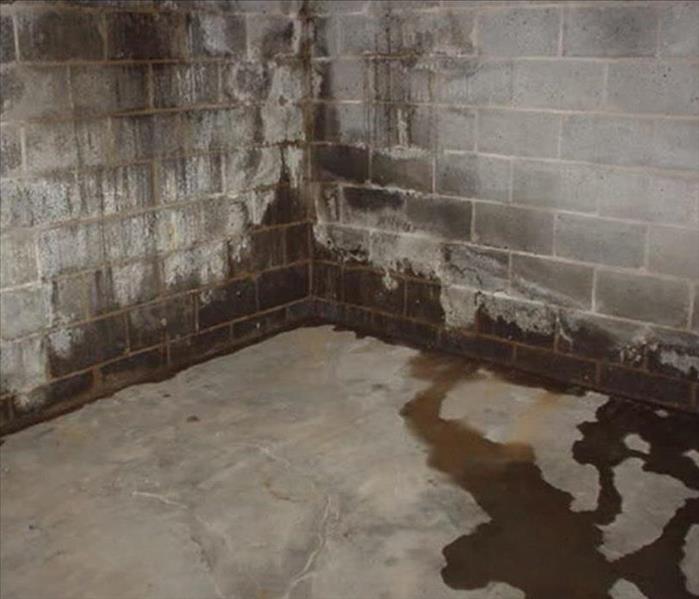Water Removal and Drying Out Your Basement Wall
2/11/2019 (Permalink)
SERVPRO Technicians Have the Skills and Training to Properly Dry Out Your Flooded Basement
When you happen upon a wet basement in, it can be particularly heartbreaking. So many possessions are now potentially ruined, and there could be several structural repairs as well. Drying the basement out is a big task, as it does not include just taking out the water and moisture, but also could include getting the mud out and in the end sanitizing everything, including duct work, to avoid mold and other contaminants in your home.
For such a big task as water removal from your basement, you need the professionals at SERVPRO to help you out. We have the equipment such as truck-mounted pumps, plus the training needed to understand how to do the job efficiently and thoroughly. We also realize time is a factor in a case like this since mold can start growing in just one to two days.
When your basement is constructed of cinder blocks, one of the most critical factors of drying out the block walls is the contents of the open cells. If enough time has passed for the cells to have equalized with the surrounding environment, they hold a certain amount of water or moisture. We examine the surface to figure out whether paint has been applied as well. Gloss or semi-gloss paints create a vapor barrier to limit the transfer of moisture from the inside to the outside of the wall. We may need to drill holes near the bottom of the wall in a mortar joint to let water drain from the cavity of the wall. Holes in the mortar joint are easily patched once drying is complete.
Some block walls contain insulation like vermiculite, cellulosic, fiberglass, or foam. Drying insulation in cavities of walls can be difficult since it requires large amounts of dry air and circulation which are challenging to maintain inside the block cavity.
Depending on local codes, some block construction has bond beams inside the walls. These affect airflow inside the cavity and slow down drying time considerably. SERVPRO staff can usually determine if bond beams are used in a wall by tapping on it.
We use a non-penetrating moisture meter to figure out when drying is complete. A material is dry only when it has gone back to its natural moisture content, so we use an area which is unexposed to the water as a control for figuring out this level of moisture. We can also take readings from materials in the control area as a target reference for drying wet materials.
SERVPRO of Milton/Braintree takes care to ensure that your basement is completely dry before saying the job is complete. Residents in the areas of the South Shore with a flooded basement for any reason should reach out to us right away.






 24/7 Emergency Service
24/7 Emergency Service
